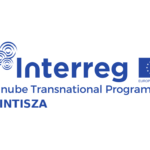Workshop on hydro-morphological measures under the Floods and Water Framework Directives – Finding synergies and addressing challenges
4-5 December 2018 in Budapest, Hungary
“According to Article 4 of the WFD, the assessment of good ecological status and potential needs to be based on biological quality elements (BQEs) and supporting physico-chemical and hydromorphological quality elements. The ecological status of a river can be assessed by evaluating indicators for the composition, abundance, species diversity or absence of various groups of organisms known as biological quality elements. BQEs that can be used for the classification of a water body’s ecological status include phytoplankton, macrophytes and phytobenthos, benthic invertebrates fauna and fish fauna. Complementary hydromorphological quality elements are 1) morphological conditions 2) hydrological regime (rivers and lakes, 3) river continuity (rivers) and 4) tidal regime (coastal and transitional waters).”
“Since centuries, urbanization has been accompanied by the construction of flood control infrastructures (levees, retention basins, channel straightening, transversal barriers etc.). In order to protect population and assets, such structures often interrupt river continuity, i.e. by disconnecting channels from floodplains, creating longitudinal barriers between upstream and downstream and straightening river stretches. Flood control can also be exerted by management of vegetation and/or sediments (e.g. selective cuts, dredging, etc.). Such actions may alter the ecological dynamics. ”
“As hydromorphological aspects between the Water Framework Directive (EU Directive 2000/60 – WFD) and the Floods Directive (EU Directive 2007/60 – FD) refer to the same fluvial processes, the issue of hydromorphology and flooding has been addressed several times within the CIS process.”
(Above some basic information from the “Background paper with conclusions from the workshop – “Hydro-morphological measures under the Floods and Water Framework Directives – Finding synergies and addressing challenges” were introduced.)
The workshop, organised in December 2018 focused on existing hydromorphological modifications due to flood protection and restoration/mitigation measures to achieve the WFD’s objectives and it also dealt with planned new hydromorphological modifications for flood protection in the context of the WFD.
The workshop aimed to find answers and outline conclusions in relation to the following questions:
- For which types of ecological restoration and mitigation measures are positive or negative impacts observed on the level of flood protection? Are there relevant examples from your countries?
- In the second FRMPs, are you considering reviewing the flood protection strategy (e.g. removing inefficient structures and studying combinations of new and more efficient structures?
- Do you have sediment management plans at the catchment scale, and how do they contribute to the objectives of the WFD and the FD?
- How are synergies between funding mechanisms (for WFD and for FD purposes) used in practice to support hydromorphological measures?
In relation to the planned new hydromorphological modifications for flood protection the following points were raised and discussed:
- How do you decide whether a planned flood protection measure has to undergo an assessment for potential deterioration? Which institutions are involved and which expertise is needed?
- Based on your experience, which types of flood protection measures are more likely to cause deterioration of water body status/potential, and which not.
- What is your practical experience with the evaluation in advance (ex-ante) of possible deterioration? How do you evaluate and quantify deterioration in terms of hydromorphological conditions and biological status?
- Have you experienced a case of cumulative effects in one water body or impacts in adjacent water bodies? How has this issue been addressed?
- What is your experience with the assessment of the individual Article 4(7) conditions in case a planned flood protection measure is expected to cause deterioration?
A background document has been prepared as an input for discussions at the Workshop. Chapter 5 of the document includes those conclusions, which were identified in the frame of the workshop’s group-discussions. The document with conclusions can be downloaded from here.



